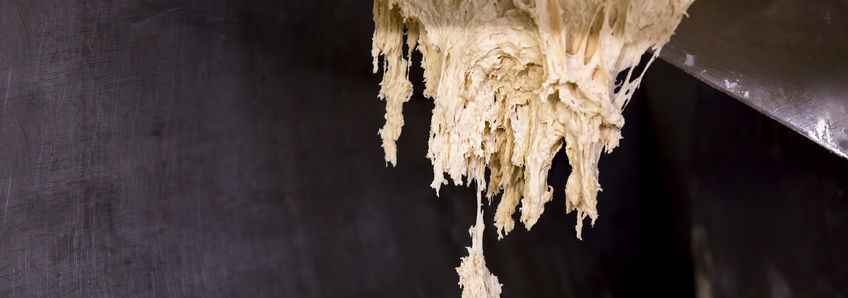
The amount of water absorption hinges on what ingredients you’re mixing, and the desired amount will be different based on the final product.
So what influences water absorption?
- Starch: About 46% of the total water absorbed is associated with the starch.
- Proteins: About 31% of the total water absorbed is associated with the proteins.
- Pentosans: About 23 % of the total water absorbed is associated with the pentosans.
- Vital wheat gluten (VWG): When added to the formula, it will increase the water absorption and impart greater stability to the dough.
- Other water binding ingredients like fiber, eggs, bran and hydrocolloids (gums).
Why does water absorption matter?
Because absorption corresponds to the hydration of your dough. If not properly hydrated, you’ll see issues with consistency, texture, quality, shelf life, machinability, volume…pretty much everything.
A farinograph is usually used and can provide an approximate value for water absorption.
The test is based first on the determination of the optimal amount of water to achieve a consistent Brabender Unit value or BU. The amount of water required to produce this consistency is the water absorption of a flour. The analysis of the typical farinograph curve yields important quality parameters such as:
- Arrival time to first achieve 500 BU
- Optimum mix time, also called dough development time
- Departure time
- Mixing Tolerance Index
- Dough stability

